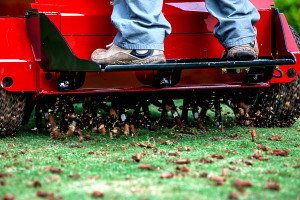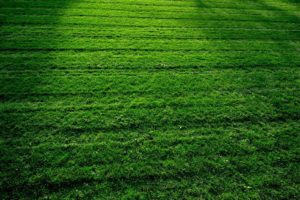If you care about keeping your lawn looking lush and green for as long as possible, you’ve probably used (or considered using) fertilizer. After all, when things start to look patchy and dry, it’s an issue of not enough nutrients in the soil, right?
Not necessarily. Although there are times and situations when fertilizing your lawn is the right choice, it’s not a universal cure-all. Instead, it should be used as part of a regular, comprehensive lawn maintenance plan that takes all parts of the grass life cycle into account.
Types of Grass
The type of grass in your lawn of will be the number one indicator of when and how you should fertilize. Because the best time to fertilize your grass is during its peak growing season (in the same way animals and people need extra nutrition during their growth spurts), it’s important to know when your lawn is expected to put in the most work. Cool-season grasses (typically found in northern states) tend to grow most in the early spring and fall. Warm-season grasses (typically found in the South) will do more of their growth in the humid heat of summer.
Things start to get tricky when you have a mixture of both these types of grasses, so it’s important to tailor a fertilization schedule to your exact lawn.
Fertilizer Contents
No two fertilizers are created equally, so it’s important to know what’s going in yours. Most fertilizers are composed of some combination of nitrogen, phosphorus, and potassium—as well as a few other nutrients like iron that grass needs to stay healthy. However, too much of one ingredient (especially nitrogen) at the wrong time, and you could end up damaging the grass. Because nitrogen stimulates top growth, it can end up taking nutrition away from the roots or causing off-season growth.
Fertilizer Alternatives
Another issue to take into account are other, more natural alternatives to fertilizing a lawn. For example, the mulch left in grass
clippings contains natural nitrogen, phosphorus, and potassium. By allowing grass clippings to remain on the lawn, you can re-introduce these minerals without resorting to fertilizer.

Core aeration can be beneficial for most lawns if performed at the right time for the type of turf grass you’re working with.
Other options include aeration, over-seeding, and timing your water cycles. Aeration, which perforates the soil with small holes, helps introduce oxygen, water, and fertilizer nutrients into the lawn. Over-seeding gives your lawn a chance to appear more lush and thick. Watering the lawn can also make a big difference, especially when it comes to cool-season grasses, which often go dormant in the heat of summer.
Depending on your lawn goals, any and all of these efforts can make a difference. With the right planning, a fertilizer can be used alongside other types of lawn maintenance to create the most desirable, green finish possible.
SHARE






